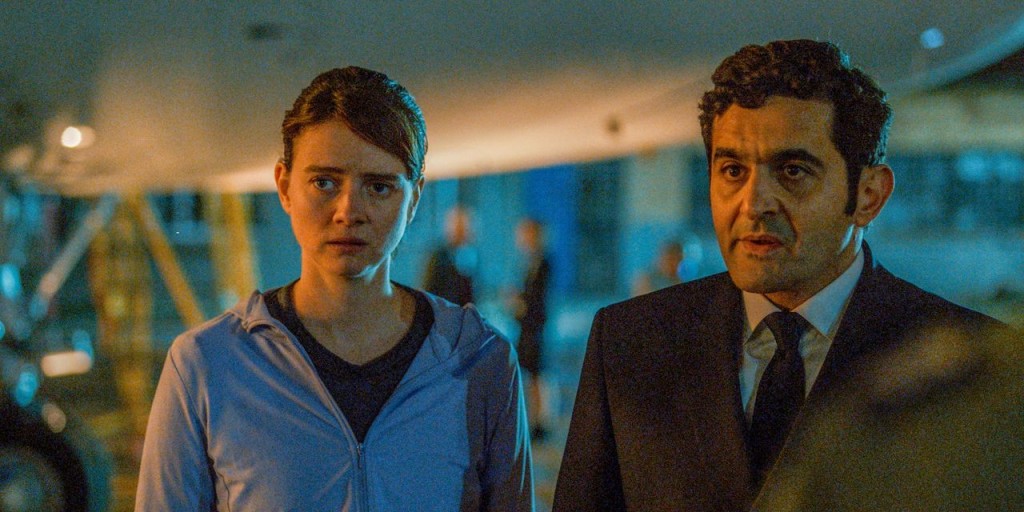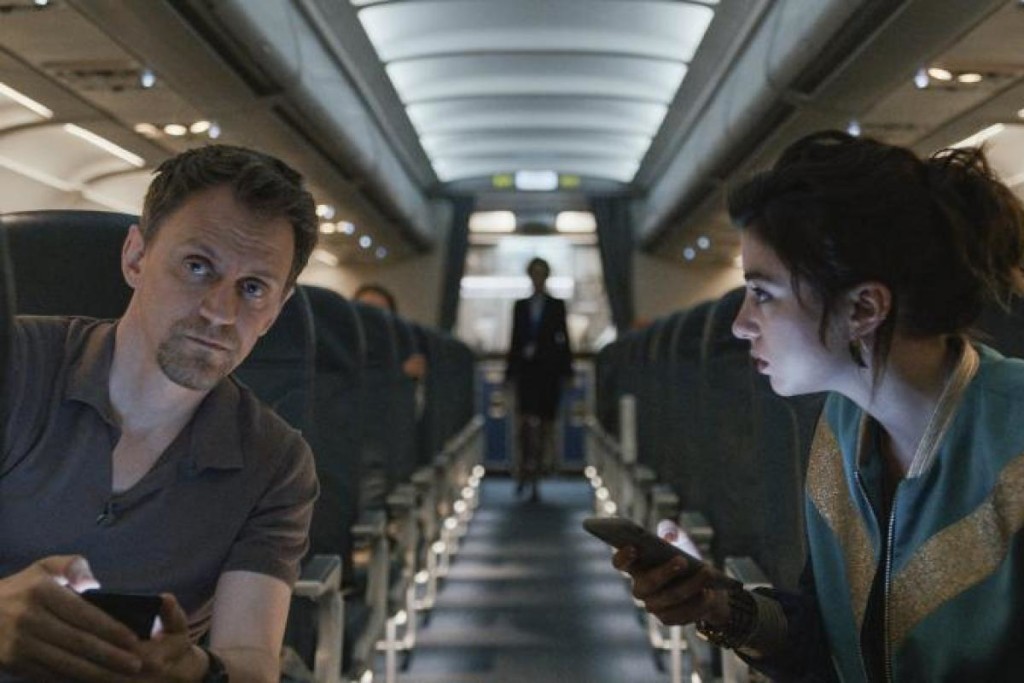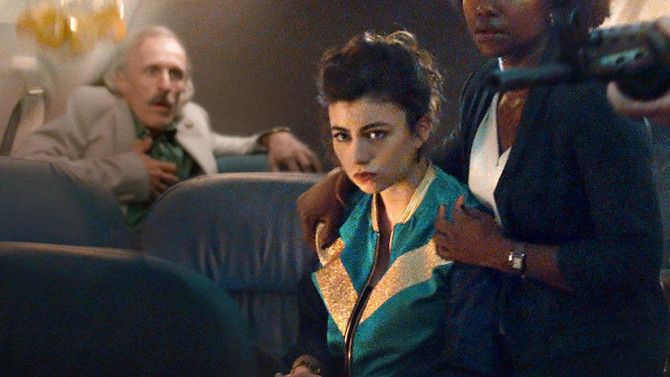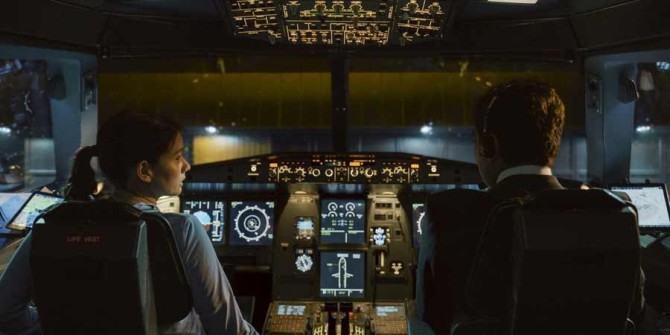So I finished Netflix’s Into the Night and I can honestly say it’s the best TV show of the year so far.
I haven’t encountered a show with this level of urgency in a long time. The closest I can think of is Netflix’s Black Summer. But what makes Into the Night so much better is that the urgency is organically built into the premise. They have to keep flying to avoid daylight.
There are three screenwriting tips I want to bring up in particular with this show. It should go without saying that I’m including spoilers. Watch the show first if possible. I guarantee that once you start, you won’t be able to stop.
Oh, and fun little piece of trivia. This show is based on a book. And the creator adapted the entire first season from the FIRST PAGE of the book.
The first concept I want to talk about is called sandwiching.
There comes multiple times in every TV or Feature script (but TV especially) where you’ve got to write a scene with boring exposition or two characters who don’t have a lot going on. This could be the C-story in a TV episode. You’ve been told you have to write the scene and there’s nothing interesting going on between the two characters.
In these situations, you want to SANDWICH the scene with something really big before and PROMISE something big is going to happen after. If you do this well, we’ll tolerate the scene.
So there’s this moment in episode 5 of Into the Night where Sylvie, our helicopter pilot protagonist, goes back to the apartment of her dead boyfriend and mourns. Another character shows up to try and convince her to come back.
Now before this scene, we just showed a major fight between two characters in another location where one character beats the other one to near death. He then leaves that character to get back to the plane. That’s the first piece of bread on this sandwich.
The second piece is we have to leave within an hour! That’s when the sun comes up. So we have to get back to the freaking airplane NOW! This is our exciting second piece of bread which is a PROMISE that something interesting is coming. And it’s for that reason we tolerate this slow decent-but-mostly-boring scene of Sylvie trying to get over her dead boyfriend.
Where writers get into trouble is when they get lazy, when they stop sandwiching boring scenes, when they try to pile 3 or 4 boring scenes inside a sandwich, or when they don’t understand the technique at all. Because that’s when you’re at risk of writing 20-30 pages of boring story.
In an ideal world, every scene would be riveting. But it’s just not possible. You need to set certain things up for later scenarios to be exciting. And setup can be boring.
Moving on, tip 2. Dialogue doesn’t matter as much as you think it does. Into the Night is one of the most riveting TV shows I’ve ever seen. But it’s in another language. And I don’t understand that language.
Therefore, I have to use subtitles. Now, for those who don’t know about the job of subtitling, these people do not directly translate what the characters are saying. Instead, they give the bare bones generalized idea of what they’re saying in its most basic form.
If you want to have some fun, turn on the dubbed English audio and also put on English subtitles. You’ll see that their dubbed words don’t even match the subtitles. That’s because two different people are doing those jobs and they’re both just putting up their generic interpretation of what’s being said.
I bring this up because everybody talks about the importance of dialogue when shows like Into the Night and movies like Parasite are amazing yet we’re basically watching them with 3rd grade level English dialogue translation.
Does this mean you shouldn’t strive to write great dialogue? Of course not. But it’s a reminder that it’s what’s SURROUNDING the dialogue that’s most important. If you get that right, a scene will work regardless of how basic the dialogue is. Shows like Into the Night prove that.
Add conflict. Add tension. Add dramatic irony. Come up with an interesting scenario, like 7 passengers questioning an 8th passenger on if he’s really who he says he is.
From there, do the best you can with your dialogue. But it’s setting up the situation surrounding the dialogue that matters most.
Finally, one of the writing devices I like the best is when the writer makes it seem TRULY IMPOSSIBLE that the characters are going to succeed in the end.
And I stress “truly” for a reason. Because most writers set up an ending where they’re already thinking of how they’re going to get the characters around the obstacles in their way, and therefore, it doesn’t TRULY feel impossible. We can sense the writer carving that escape hatch that the characters are going to find and be okay.
Instead, you want to write your ending almost like you hate yourself. You want to make it as hard as possible for you the writer to figure out how your characters are going to get out of this.
Into the Night aces this test and then some.
(Major Spoilers)
While on their final flight – they’re not going to have fuel after this – the group has located an old Soviet bunker in Bulgaria that government officials are fleeing to. So their plan is to land the plane at the Bulgarian airport and haul ass to the bunker.
Now get this.
There’s no guarantee they’re going to get inside. It might be locked. It might be full. So right from the start, it’s bad news.
Next, they don’t know exactly where the bunker is. They’re working with some janky old map.
When they land, they have half an hour until sunrise. So they have to find a mystery bunker that they only vaguely know the location of in a country they’ve never been to before, driving on roads that are completely foreign to them, and then hope they get inside when they get there.
Only one person can carry the map but there are 9 people so they have to split up into two jeeps. So the first jeep is speeding away. The second jeep has to try and keep up with them on these winding roads. If they lose them, there’s no way to know which way to go.
Three quarters of the way there, the second jeep crashes. So they have to walk the rest of the way. Meanwhile, the first jeep crosses a gate that automatically closes behind them, locking the second group out.
The second group eventually gets to the gate but it’s electric, so they can’t even climb over it. There’s only 12 minutes left before the sun rises, by the way. They don’t even know if they’re close to the bunker or not. Also, nobody knows where the bunker entrance is. It’s not like a McDonald’s with Golden Arches signaling the location. It’s metal doors built into a hill.
I was sitting there watching this both in awe of the show, in how well it was crafted, and in awe of the writer, who so boldly made things difficult for himself.
Because it would’ve been easy to throw one mildly difficult obstacle at the characters. To throw THIS many obstacles requires a lot more work. Because now you’re stopping the characters more. You’re having to come up with solutions to these problems you’ve created. And bad writers don’t want to do that. It takes way longer to write the obstacle overcoming scenes and requires a lot more brainpower.
So I was rooting for both the characters and the writers simultaneously with this ending because I couldn’t have asked for a better end to this season.
Those are my Into the Night tips. Take them with you, into the night, and use them on your next screenplay!





